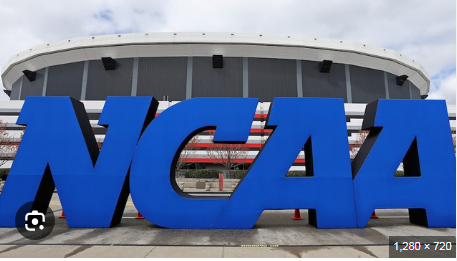Indication shows that the administration is considering a significant increase in athletic scholarships for both football and basketball programs. The scholarships for these programs are currently set at 22 for football and 35 for basketball, with proposed increases to 35 and 68, respectively. This substantial adjustment is expected to have a significant impact on both the programs and the institution as a whole. Here’s a detailed exploration of the implications and considerations surrounding this proposed increase:
Context of the Scholarship Increase**
Current Scholarship Allocation:**
Football Scholarships:** Currently, the football program is allotted 22 scholarships. This number is generally less than the maximum allowed by the NCAA, which provides for up to 85 scholarships in FBS programs, though the specific number can vary based on program budgets and institutional decisions.
Basketball Scholarships:** The basketball program is currently allocated 35 scholarships. For NCAA Division I basketball, the maximum number of scholarships per team is 13, so this number likely represents a combination of full and partial scholarships or a discrepancy that needs addressing.
Proposed Increases:**
Football:** The proposed increase to 35 scholarships suggests a move towards more competitive recruitment and player support, although it still falls short of the NCAA maximum.
Basketball:** The proposed increase to 68 scholarships significantly exceeds the NCAA limit of 13 per team, implying either a potential expansion to include additional players or a restructuring of scholarship allocations that could include partial scholarships or broader financial aid packages.
Implications of the Scholarship Increase**
Recruitment and Talent Acquisition:**
Football Program:** Increasing scholarships for football can enhance recruitment efforts by allowing the program to attract and retain more talented players. This can improve team depth and competitiveness, helping to build a stronger program.
Basketball Program:** For basketball, increasing the number of scholarships provides greater flexibility in recruiting and retaining players. It may allow the program to offer more comprehensive financial support, which can attract high-caliber recruits and strengthen the team’s overall talent pool.
Team Performance:**
Enhanced Training:** With more scholarships, both programs can potentially improve their training and development by having access to a larger pool of players. This can lead to better practices, increased competition, and overall improved performance.
Depth and Depth:** Increased scholarships can help teams build depth by ensuring they have quality players available in multiple positions, which can be crucial for managing injuries and maintaining performance throughout the season.
Financial and Operational Impact:**
Budget Considerations:** Increasing scholarships requires additional financial resources. The management will need to consider the impact on the athletic department’s budget and explore funding sources, such as alumni donations, sponsorships, or reallocation of resources.
Operational Adjustments:** The increase in scholarships will necessitate adjustments in the athletic department’s operations, including additional support staff, academic advising, and other resources to accommodate the larger number of scholarship recipients.
Institutional and Academic Impact:**
Academic Support:** With more athletes receiving scholarships, there may be an increased need for academic support services to ensure that students meet their academic responsibilities and succeed both on and off the field.
Institutional Goals:** The increase in scholarships can align with the institution’s goals of enhancing athletic success and improving student-athlete experiences. It may also contribute to the university’s reputation and attract more prospective students.
Impact on Current and Prospective Athletes:**
Current Athletes:** For current scholarship recipients, the increase may lead to enhanced support and opportunities. It may also foster a more competitive environment, motivating players to perform at their best.
Prospective Athletes:** The increase in scholarships can make the programs more attractive to high school and junior college recruits, providing them with more opportunities and potentially influencing their decisions to commit to the university.
Considerations for Management**
Financial Feasibility:**
Budget Analysis:** Management needs to conduct a thorough financial analysis to assess the feasibility of the proposed increases. This includes evaluating current revenue sources, expenses, and potential impacts on the overall budget.
Funding Sources:** Identifying potential funding sources, such as enhanced fundraising efforts, sponsorship deals, or adjustments in the athletic department’s budget, is essential to support the scholarship increases.
Impact Assessment:**
Short-Term and Long-Term Effects:** Management should assess both the short-term and long-term effects of increasing scholarships. This includes considering immediate impacts on recruitment and performance, as well as long-term effects on program sustainability and institutional goals.
Stakeholder Feedback:** Gathering feedback from stakeholders, including coaches, current athletes, alumni, and donors, can provide valuable insights into the potential benefits and challenges associated with the scholarship increases.
Implementation Plan:**
Phased Approach:** Implementing the scholarship increases in phases might be a practical approach, allowing for adjustments and evaluations of the impacts at each stage.
Support Systems:** Developing support systems and infrastructure to accommodate the increased number of scholarship recipients is crucial. This includes enhancing academic support, coaching staff, and facilities.
Communication and Transparency:**
Clear Communication:** Transparent communication about the reasons for the scholarship increases, the expected benefits, and the financial implications will help manage expectations and build support among stakeholders.
Ongoing Updates:** Providing ongoing updates on the implementation process and the impact of the increases can help maintain trust and engagement from the university community.
Conclusion**
The deliberation about increasing scholarships for football and basketball at Southern Mississippi represents a significant decision with wide-ranging implications. The proposed increases aim to enhance recruitment, support, and performance for both programs, while also requiring careful consideration of financial, operational, and institutional impacts. By conducting a thorough analysis, engaging stakeholders, and planning effectively, management can make informed decisions that support the long-term success of the athletic programs and the university as a whole.










